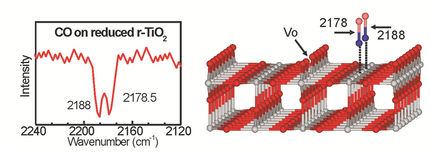The structural memory of water persists on a picosecond timescale
Long-lived sub-structures exist in liquid water as discovered using novel ultrafast vibrational spectroscopies
A team of scientists from the Max Planck Institute for Polymer Research (MPI-P) in Mainz, Germany and FOM Institute AMOLF in the Netherlands have characterized the local structural dynamics of liquid water, i.e. how quickly water molecules change their binding state. Using innovative ultrafast vibrational spectroscopies, the researchers show why liquid water is so unique compared to other molecular liquids.
With the help of a novel combination of ultrafast laser experiments, the scientists found that local structures persist in water for longer than a picosecond, a picosecond (ps) being one thousandth of one billionth of a second (10-12 s). This observation changes the general perception of water as a solvent. “71% of the earth’s surface is covered with water. As most chemical and biological reactions on earth occur in water or at the air water interface in oceans or in clouds, the details of how water behaves at the molecular level are crucial. Our results show that water cannot be treated as a continuum, but that specific local structures exist and are likely very important” says Mischa Bonn, director at the MPI-P.
Water is a very special liquid with extremely fast dynamics. Water molecules wiggle and jiggle on sub-picosecond timescales, which make them undistinguishable on this timescale. While the existence of very short-lived local structures - e.g. two water molecules that are very close to one another, or are very far apart from each other - is known to occur, it was commonly believed that they lose the memory of their local structure within less than 0.1 picoseconds.
The proof for relatively long-lived local structures in liquid water was obtained by measuring the vibrations of the Oxygen-Hydrogen (O-H) bonds in water. For this purpose the team of scientists used ultrafast infrared spectroscopy, particularly focusing on water molecules that are weakly (or strongly) hydrogen-bonded to their neighboring water molecules. The scientists found that the vibrations live much longer (up to about 1 ps) for water molecules with a large separation, than for those that are very close (down to 0.2 ps). In other words, the weakly bound water molecules remain weakly bound for a remarkably long time.
Original publication
Other news from the department science
Most read news
More news from our other portals
See the theme worlds for related content
Topic World Spectroscopy
Investigation with spectroscopy gives us unique insights into the composition and structure of materials. From UV-Vis spectroscopy to infrared and Raman spectroscopy to fluorescence and atomic absorption spectroscopy, spectroscopy offers us a wide range of analytical techniques to precisely characterize substances. Immerse yourself in the fascinating world of spectroscopy!

Topic World Spectroscopy
Investigation with spectroscopy gives us unique insights into the composition and structure of materials. From UV-Vis spectroscopy to infrared and Raman spectroscopy to fluorescence and atomic absorption spectroscopy, spectroscopy offers us a wide range of analytical techniques to precisely characterize substances. Immerse yourself in the fascinating world of spectroscopy!



























































